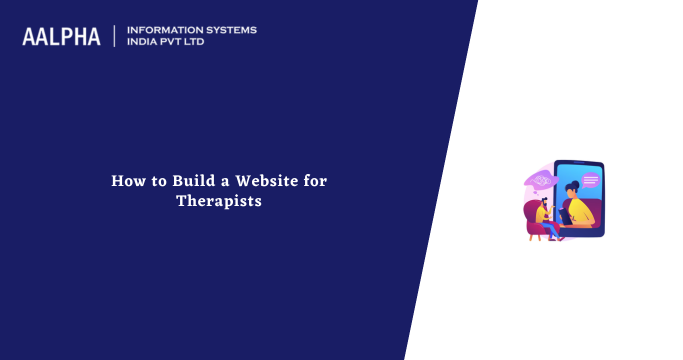A career in UX designing holds immense promise. As the internet is becoming home to everything from education to entertainment, the need for professional UX designers is on the rise.
In a survey, 88% of online shoppers said they won’t return to a website where they had an unpleasant experience. For any business, small or big, ensuring a top-notch user experience is very important.
What is UX design? Isn’t it the same as UI design? Does it involve sketching or coding?
We come across these questions when talking about UX design. Many people do not have any understanding of what the work entails. But all end users benefit from a smooth user experience. If you want to be the person who works backstage to ensure a smooth experience for all users, a career in UX design is perfect for you.
Top 5 tips to becoming a UX designer
With the right skills and practices, anyone can be a successful UX designer. Our list of top five tips to becoming a UX designer covers the most essential elements of UX designing. It’ll give you an all-around understanding of the most important skills in the field.
-
Learn your craft
While you may think a vibrant network or a solid portfolio will be your ticket to a UX design career, there is no shortcut to success. Other factors are important, but nothing comes close to learning and understanding the principles of UX design. Before you think of becoming a UX designer, you have to spend some time learning everything about it.
In 2021, you do not need any specific college degree to become a UX designer. You can be a mathematics major or a psychology major, your skills matter more than your degree. Start with the basics of UX design, and progress towards finer details.
You can learn about UX design from various sources. There are a plethora of online courses to choose from. You can even learn without paying anything. Read about professional UX building tips and methods on the internet, watch instructional videos, or read a book about UX design.
Whenever you are subscribing to a knowledge forum or a course, make sure it adds value to your life. You won’t benefit at all by relearning what you already know. On the other hand, you need to continually upskill to be relevant in a competitive market.
Opportunities in UX design are plenty, and so are ways to learn about it. If books and articles work best for you, read as many as you can. If you prefer instructional videos, learn about UX design from video streaming platforms. For a structured understanding, a UX design course would be your best bet.
-
Hone your problem-solving skills
UX design demands solving different problem scenarios under a tight deadline. If you do not understand effective problem-solving methods, you would have a hard time becoming a professional UX designer.
When you want to excel as a UX designer, you need to hone your problem-solving skills.
You cannot learn about problem-solving from textbooks and courses. Reading and learning about it will give a direction and a generalized approach, but you have to tackle first-hand encounters with no assistance. That’s why it is very important to first learn all you can about UX design. From there, practice and experience will make your problem-solving skills better.
The best way to learn problem-solving skills is to put yourself at the forefront and tackle problems proactively. If you can, join an internship program where you can see how problem scenarios come up, and how to deal with different customer pain points. An internship will allow you to watch and learn, instead of relying on theoretical explanations.
For many people, the ability to solve problems comes naturally. They have an obvious advantage in UX designing, but it is also a learnable skill. If you put yourself in situations that demand effective solutions to problems, you will automatically learn problem-solving.
Problem-solving is one of the most important soft skills for UX designers. A good grasp of it will make your career trajectory smoother.
1. Practice visualizing ideas
While UI designers are different from UX designers, their works overlap in terms of presenting a graphic solution to users. Most, if not all, users would prefer a ready visual solution to their problem instead of going through text-based remedies. For this reason, UX designers need to be able to graphically present any idea.
You do not need professional sketching skills to be a UX designer, but being able to draw simple shapes and figures will help a lot. Practice sketching your solutions instead of making them descriptive. Get into the habit of picturing a solution instead of thinking about it in theoretical terms. Imagine you need to make a kid understand a point, and the child doesn’t yet know how to read.
Once you can effectively communicate complex ideas in pictorial terms, you will be able to design better user experiences.
Modern information technology is user-focused. We no longer expect only tech-savvy professionals to use advanced tools and applications. Anyone from a child to an aged person will use these tools and benefit from them. To make the process easier for them, a visual mode of navigation is often the best.
Think of visualizing along the lines of problem-solving. All you need to do is effectively chart out a solution for the problem. But instead of charting out a detailed, step-by-step solution, you present a visual description of the solution. Like most things, you can get better at visualization with practice. Once you learn to visualize different problem scenarios and their solutions, you will become an efficient UX designer.
2. Build a solid network
Remember we told you that a solid network is not all you need for a career in UX designing? However, it is one of the many important things for a successful career trajectory. Not only that, but your expertise will also depend on your network. As you get in touch with industry experts, you will see and learn how they get better at their work.
In 2021, networking is both easier and tougher than ever. Easier because social media makes it possible for you to reach out to anyone. Tougher because thousands of people are also trying to reach out to those same people or organizations.
The importance of networking is not isolated in the field of UX design. Across industries, 80% of people believe that effective networking had a big role to play in their success. How your network will have a significant impact on your UX design career.
When you reach out to experts on social media, remember to follow up. It is also a good practice to maintain correspondence without intruding on their private space. Follow all leading brands, companies, and experts on social media. Go a step further and follow their blogs, their latest projects, and more.
As you build a solid network, you notice an inflow of opportunities. The quality of these opportunities will also depend on the quality of your network. To sum it up, your network will directly determine how smoothly you progress in your UX designer career.
3. Understand customer behavior
At the end of the day, every UX designer works to ensure a smooth experience for all users. How can you do that without understanding your customers first?
There are many approaches to understanding customers. Some rely on data, others like direct interactions. While it is a good practice to engage in face-to-face conversations, it is not impossible with a huge sample size. In such cases, product analytics work best to tell you where pain points lie. Once you identify the areas that need work, you can turn your attention to them.
Empathy is an important soft skill for all UX designers. In a literal sense, it means being compassionate towards others by putting yourself in their shoes. In the context of UX design, it means being perceptive of the problems users face by putting yourself in similar circumstances. Once you are where the customer is supposed to be, you can accurately figure out what works and what doesn’t.
While working with user-generated data, pay attention to trends and patterns. It’ll give you a broad understanding of the most common things to go wrong in a user experience. Knowing your customers is a long and continuous process. You have to get regular feedback and work on it as and how the situation demands. If you have no experience with human psychology and consumer sentiments, it might seem difficult at the beginning. With practice, you’ll understand customers better.
Conclusion
Being a UX designer demands certain skills, all of which are learnable. The great thing about the field is that it does not demand any specific expertise. From designers to coders, anyone can be a great UX designer. Follow our five tips to becoming a UX designer, and you will easily figure out how to be a successful UX designer.
Looking for UX design services? feel free to contact us & get a quotation at no cost




Share This Article:
Written by:
Muzammil K
Muzammil K is the Marketing Manager at Aalpha Information Systems, where he leads marketing efforts to drive business growth. With a passion for marketing strategy and a commitment to results, he's dedicated to helping the company succeed in the ever-changing digital landscape.
Muzammil K is the Marketing Manager at Aalpha Information Systems, where he leads marketing efforts to drive business growth. With a passion for marketing strategy and a commitment to results, he's dedicated to helping the company succeed in the ever-changing digital landscape.